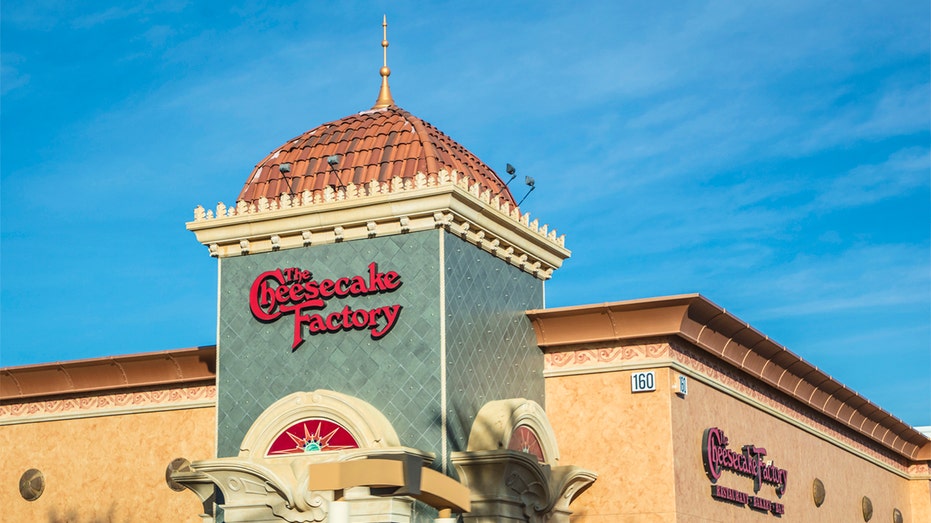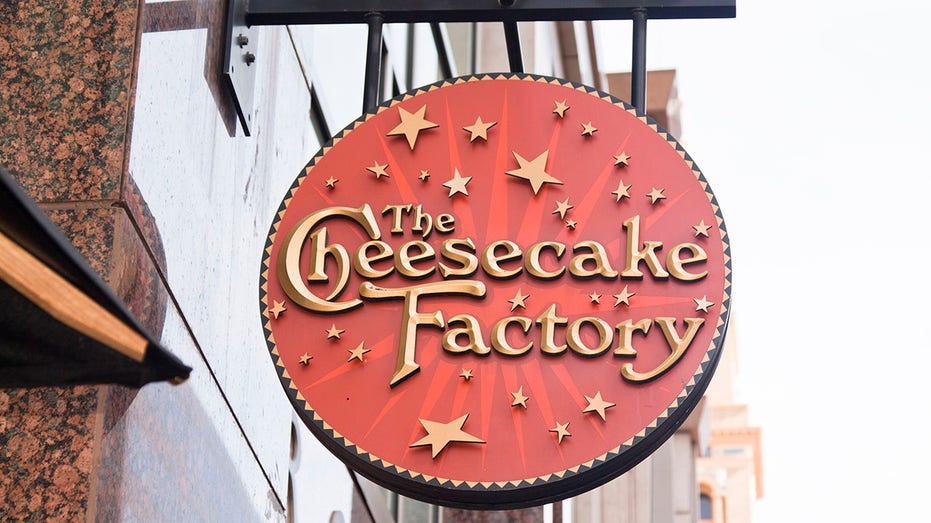How cheesecake-to-go saved the Cheesecake Factory
The company said it sold more cheesecake as a percent of sales last year than it did before the pandemic
With its massive menu offering everything from crispy chicken sandwiches to coconut cream cakes, Cheesecake Factory Inc. already ran among the most complicated operations in the restaurant industry. It’s emerging from the pandemic with a model that’s even more sprawling and complex.
When Covid-driven closures cut deeply into sit-down business in Cheesecake Factory’s cavernous, lavish dining rooms, the 208-restaurant chain emphasized to-go orders to help buttress sales. It worked: The chain is averaging more than $3 million in to-go orders per location this year, more than double its typical amount before the crisis.
Cheesecake, in particular, travels well, and people order it at all hours. The company said it sold more cheesecake as a percent of sales last year than it did before the pandemic. "You have a few more people who are just getting slices at nine o’clock at night delivered to their house," said David Gordon, the chain’s president.
Now more customers are returning to Cheesecake Factory’s 10,000-square-foot dining rooms too. And the combination has stretched the company and its workers, some of whom say they are at a breaking point.

An editorial stock photo of The Cheesecake Factory restaurant in Las Vegas, NV.
Cheesecake Factory has staked its brand on expansive choices and precise service detailed in a nearly 500-page operations manual which includes roughly a full page of rules for the handling of strawberries for its cakes and a 12-step breakdown for hot tea service, according to a copy viewed by The Wall Street Journal. Unlike many competitors last year, Cheesecake Factory didn’t cut its menu, which runs more than a dozen pages. Instead it added more after the pandemic hit, debuting a "Chocolate Caramelicious Cheesecake Made With Snickers" and bringing back its grilled shrimp and bacon club, among other new options.
"Somebody today would be crazy to start something this complex, but we figure it out," said Mr. Gordon in an interview.
Some chain workers said the volume of the new to-go orders can be crushing. At one California restaurant, cheesecake boxes are stacked floor to ceiling in its freezer in preparation for sales. Prepping the cakes by the chain’s standards becomes more difficult with so many orders, some workers said.
CHICK-FIL-A BRINGING BACK PEPPERMINT CHIP MILKSHAKES FOR LIMITED TIME
"The sheer volume of what you are expected to churn out is unsustainable," said Sophia Um, a bakery worker in a Cheesecake Factory outside of Los Angeles. "I have had co-workers run to the breakroom for a mental breakdown." Workers said servers, managers and fellow employees have left because of the strain or easier opportunities elsewhere.
Mr. Gordon said he recognizes that it can be difficult for workers to meet the demand, particularly during peak hours. He said the company has improved its systems during the pandemic to help with the to-go sales as they have grown and incorporated worker feedback into the changes. Last year, the company added access to mental health professionals, through virtual visits, as a benefit for employees, he said.
What he worries about at night, Mr. Gordon said, is keeping enough top-notch workers. "Is it more challenging today?" he said. "It is."
Humble Beginnings
The Cheesecake Factory traces its origins to Evelyn Overton, a mother of two from Detroit, who started baking cheesecakes in the 1940s after clipping a recipe from a newspaper. She and her husband moved west to open The Cheesecake Factory bakery in 1972, and found success selling her creations to restaurants in the Los Angeles area. In 1978, her son, David Overton, opened a Cheesecake Factory restaurant in Beverly Hills, Calif., to showcase his mother’s baking. Mr. Overton kept adding menu items, and expanded the chain to malls across the U.S., to the Las Vegas Strip, and to international outposts including Beijing and Bahrain. Mr. Overton remains chief executive of the now $2.15 billion company.
Everywhere it expanded, the company has pushed pages of choices and portions that guarantee a doggie bag.
"The Cheesecake Factory is about as American as you can get when it comes to choice," Mr. Gordon said.
After going public under the symbol "CAKE" in 1993, the Calabasas Hills, Calif.-based company managed to continue growing same-store sales and attracted richer valuations than many casual-dining peers. Its growth hit a bump in 2017, when same-store sales fell and the company told investors it would do more to grow. The company, which often had hourslong waits at its locations, began advertising more broadly. It acquired another full-service restaurant company, Phoenix-based Fox Restaurant Concepts, in 2019 in a deal valued at $353 million to help fuel its growth. Fox, run by restaurateur Sam Fox, operates brands that include North Italia and Flower Child.
| Ticker | Security | Last | Change | Change % |
|---|---|---|---|---|
| CAKE | CHEESECAKE FACTORY INC. | 57.67 | -1.64 | -2.77% |
Less than five months after the deal closed, the pandemic hit. Cheesecake Factory furloughed 41,000 of its hourly workers in March 2020, one of the first prominent signs of the wreckage that the pandemic would bring to restaurants. It closed dining rooms. It asked its landlords for breaks on rent. For a time, it cut pay for its top executives and board by 20%.
The Securities and Exchange Commission later said the company was losing about $6 million in cash weekly and estimated it had only about four months’ worth of cash left. The regulator said the company misled investors about its operations.
Cheesecake Factory didn’t admit to the SEC’s findings but agreed to a penalty of $125,000 in December. The company said in a filing that it fully cooperated with the SEC.
The company had added online ordering and delivery before the pandemic, and it quickly ramped up its to-go operation that spring. Cheesecake Factory converted spaces in parking lots of many of its more than 200 locations into pickup stations for orders. Inside, while dining rooms were closed, restaurants converted tables no longer seating guests into assembly lines for delivery.

Cheesecake Factory sign (iStock)
The company spent $16 million on advertising in 2020, up 60% from the year before, in an effort to reach customers who might order to-go, but hadn’t dined inside before. Indoor dining returned this year, but nearly three-quarters of the to-go business has remained.
Plenty of other restaurants undertook similar overhauls of their operations and staffing. To-go orders were 45% of casual dining restaurants’ business in the year ending in September, more than double the level in the same period before the pandemic, according to consumer research firm the NPD Group.
The trend is straining employees at a time when restaurant operators across the U.S. are struggling to find enough people to handle the workload. The rate of food service and hotel employees leaving their jobs hit 6.8% in August, the highest since the Labor Department began reporting the data more than 20 years ago.
Part of the staffing shortage at Cheesecake Factory stems from the furlough of hourly workers when Covid-19 first hit. Still, the company did retain some key restaurant employees as it pondered its future in the first weeks of the pandemic. Amid the staffing cuts that spring, the company decided to keep its more than 3,000 managers to help get its restaurants running again as soon as possible. To pay their salaries, Mr. Gordon raised $200 million cash by selling preferred shares to private-equity firm Roark Capital Group. The chain tapped those lieutenants to oversee the rapid expansion of its to-go effort as it tried to bring back hourly workers.
CLICK HERE TO READ MORE ON FOX BUSINESS
"We were teaching servers how to be cashiers. We were teaching people how to pack food," said Rebecca Perkins, a general manager in Sherman Oaks, Calif.
Now, finding and retaining workers is a major challenge. To speed hiring, Cheesecake Factory said it has simplified its application, and managers are trying to respond faster to candidates. The company said it has cut experience requirements for servers to six months from the traditional year.
Coping With the Crush
Many of their new hires are getting a baptism by fire. By this past summer, nearly all the company’s restaurants had reopened their dining rooms—often festooned with Egyptian-style columns, dark wood paneling and limestone floors—to full capacity. That has complicated operations as employees try to juggle those dining in with the to-go orders, while trying to live up to the company’s exacting and extensive standards for food presentation and customer service, some workers said. Orders at peak times can particularly scramble operations, they said.
In the second quarter, same-store sales were up 150% from a year ago, and 7.8% from the same period in 2019. Cheesecake Factory restaurants averaged nearly $11 million in annual sales before the pandemic; when the company last updated that figure in late July, it said it was now running at a pace of nearly $12 million a year per store.
Mr. Gordon said the company is developing new tools to help its employees cope with the crush. Cheesecake Factory managers now have the ability to temporarily halt delivery service if their kitchen becomes overwhelmed, a feature it introduced this year before its busiest day of the year: Mother’s Day. The company is also working with its food-delivery provider, DoorDash Inc., about spacing out online to-go sales so they don’t all come in at once. The technology aims to help operations and reduce errors, the company said.
GET FOX BUSINESS ON THE GO BY CLICKING HERE
A DoorDash spokesman said that it’s working with the Cheesecake Factory to enhance its technology to manage capacity while maintaining sales.
Mr. Gordon said he is personally familiar with the rising pressures on Cheesecake Factory’s employees. Earlier in his career at the company, while working as a senior manager, Mr. Overton took Mr. Gordon aside to confer over a quesadilla that had sat too long in the restaurant’s kitchen window before being served. Mr. Overton’s message: No detail is too small at the Cheesecake Factory.
Mr. Gordon says he frequently tells managers the story.
"Everybody in that restaurant is just as fanatical about the quesadilla coming up in the window at three o’clock today as they were 27 years ago," said Mr. Gordon.
This article originally appeared in The Wall Street Journal




















